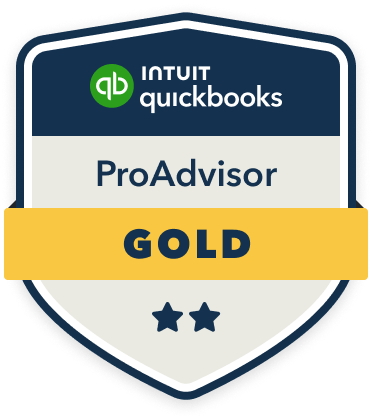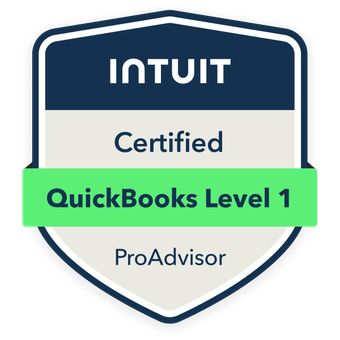Key nonprofit bookkeeping terms include restricted and unrestricted funds, which define how you can use donations based on donor intent. You’ll need to understand functional expenses for program services, management, and fundraising, along with proper cost allocations. Essential concepts include fund accounting principles, grant management tracking, and IRS forms like 990 and 1023. These fundamentals establish the framework for maintaining your organization’s tax-exempt status and financial compliance. The deeper mechanics of these terms reveal vital operational insights.
Restricted and Unrestricted Funds Explained

Money donated to non-profits falls into two main categories: restricted and unrestricted funds. I’ll explain how these fundamental classifications impact your organization’s financial management.
Restricted funds come with donor-imposed limitations on how you can use them. You must honor these constraints, whether they’re temporary (time-bound) or permanent (endowments). Breaking these restrictions can trigger legal consequences.
Unrestricted funds offer you maximum flexibility – you can allocate them wherever your organization needs them most. They’re essential for covering operational costs, responding to emergencies, and pursuing strategic opportunities that restricted funds can’t support.
Understanding Functional Expenses and Allocations
When managing a non-profit’s finances, you’ll need to understand how functional expenses work and how to properly allocate them. I’ll show you that functional expenses fall into three main categories: program services, management and general, and fundraising expenses.
I recommend you master expense allocation since it’s required by GAAP and Form 990. You’ll need to split shared costs like rent, utilities, and salaries across these categories based on actual usage or systematic methodologies. For example, if your executive director spends 70% of their time on programs, allocate their salary accordingly.
This transparency helps donors evaluate your operational efficiency.
Essential IRS Forms and Tax-Exempt Status

Non-profit organizations must keep up with specific IRS requirements to maintain their tax-exempt status. I’ll help you understand the critical forms you need to file and maintain compliance with federal regulations.
- Form 1023 or 1023-EZ – Your initial application for tax-exempt status under section 501(c)(3)
- Form 990 series – Annual information returns that report your organization’s activities, governance, and finances
- Form 8282 – Required if you sell or dispose of donated property valued at $5,000+ within three years
I emphasize the importance of timely filing these forms, as failure to do so can result in penalties or loss of tax-exempt status.
Fund Accounting Principles for Non-Profits
I’ll explain the fundamental principles of fund accounting that shape how non-profits track and report their resources effectively. Fund types include operating funds, capital funds, and endowment funds, while the pivotal distinction between restricted and unrestricted funds determines how your organization can utilize donations and grants. Net asset classifications – which encompass without donor restrictions, with donor restrictions, and permanently restricted categories – provide the framework for proper stewardship and compliance with accounting standards.
Fund Types and Categories
Money management in non-profit organizations follows a unique approach called fund accounting, where resources are divided into distinct categories based on their designated purposes and restrictions. I’ll show you the primary fund types you need to master for effective non-profit financial control:
- Unrestricted Funds – Resources available for general operations and discretionary spending without donor-imposed limitations
- Temporarily Restricted Funds – Assets with donor stipulations that expire with time or specific actions
- Permanently Restricted Funds – Endowments and assets that must be maintained indefinitely, using only generated income
Understanding these categories guarantees compliance with FASB standards and reinforces your financial stewardship.
Restricted vs. Unrestricted Funds
When managing donor contributions, understanding the critical distinction between restricted and unrestricted funds forms the foundation of proper non-profit fund accounting. I’ll explain why this matters for your compliance and control.
Restricted funds carry donor-imposed limitations on their use, whether temporary or permanent. I must track these separately and honor the donor’s intent, whether it’s for specific programs, time periods, or endowments.
Unrestricted funds give me maximum flexibility – I can allocate these for any purpose within our mission and operational needs. However, I still maintain rigorous documentation to demonstrate proper stewardship and build donor trust.
Net Asset Classifications
Building on our understanding of restricted and unrestricted funds, net asset classifications serve as the cornerstone of non-profit financial reporting under FASB standards. I’ll guide you through the strategic framework that successful non-profits use to maintain compliance and demonstrate fiscal responsibility.
- Without Donor Restrictions – Assets you control freely, enabling operational flexibility and strategic resource allocation
- With Donor Restrictions – Time-restricted or purpose-restricted assets that require strict adherence to donor stipulations
- Underwater Endowments – Endowment funds where current fair value falls below original gift amount, requiring specialized reporting and management protocols
These classifications empower you to execute precise financial control while maintaining donor trust.
Grant Management and Accountability Terms

I’ll help you understand two critical components of grant management in non-profit accounting: grant tracking systems and restricted fund documentation. Grant tracking systems require meticulous record-keeping of every dollar received and spent, ensuring compliance with donor specifications and government regulations. Restricted fund documentation demands that I maintain clear, auditable records showing how funds are used exclusively for their designated purposes, which is essential for maintaining donor trust and meeting legal requirements.
Grant Tracking Systems
Maintaining accurate grant tracking systems forms the backbone of effective non-profit financial management. I’ve found that implementing robust tracking mechanisms guarantees compliance with donor requirements and regulatory standards. These systems provide real-time visibility into grant allocation, spending, and reporting obligations.
- Grant Management Software (GMS) automates workflows, tracks deadlines, and monitors program outcomes
- Integrated Financial Management Systems (IFMS) link grant data with accounting records for seamless reconciliation
- Compliance Tracking Modules (CTM) verify adherence to grant terms, restrictions, and reporting requirements
You’ll gain strategic control over your organization’s grant portfolio while maintaining accountability to stakeholders and regulatory bodies.
Restricted Fund Documentation
While grants provide essential funding for non-profit organizations, restricted fund documentation serves as the bedrock for tracking and managing these designated resources. I’ll help you understand why maintaining detailed records of donor-restricted funds is indispensable for compliance and accountability.
You must document each fund’s purpose, restrictions, spending timeline, and reporting requirements. I recommend creating separate ledgers for each restricted fund, tracking every transaction meticulously. This documentation safeguards your organization from misuse allegations and guarantees you’re honoring donor intent. Remember, proper restricted fund documentation isn’t just about record-keeping—it’s about maintaining donor trust and demonstrating stewardship excellence.
Financial Statements Unique to Non-Profits
Non-profit organizations require specialized financial statements that differ markedly from their for-profit counterparts. I’ll explain the unique statements you need to master for regulatory compliance and stakeholder transparency.
- Statement of Financial Position – This replaces the traditional balance sheet and categorizes net assets into “with donor restrictions” and “without donor restrictions”
- Statement of Activities – Shows changes in net assets across all classes, replacing the income statement
- Statement of Functional Expenses – Details program services and supporting activities, demonstrating your mission-focused spending
Understanding these statements empowers you to maintain compliance while showcasing your organization’s fiscal responsibility and impact.









